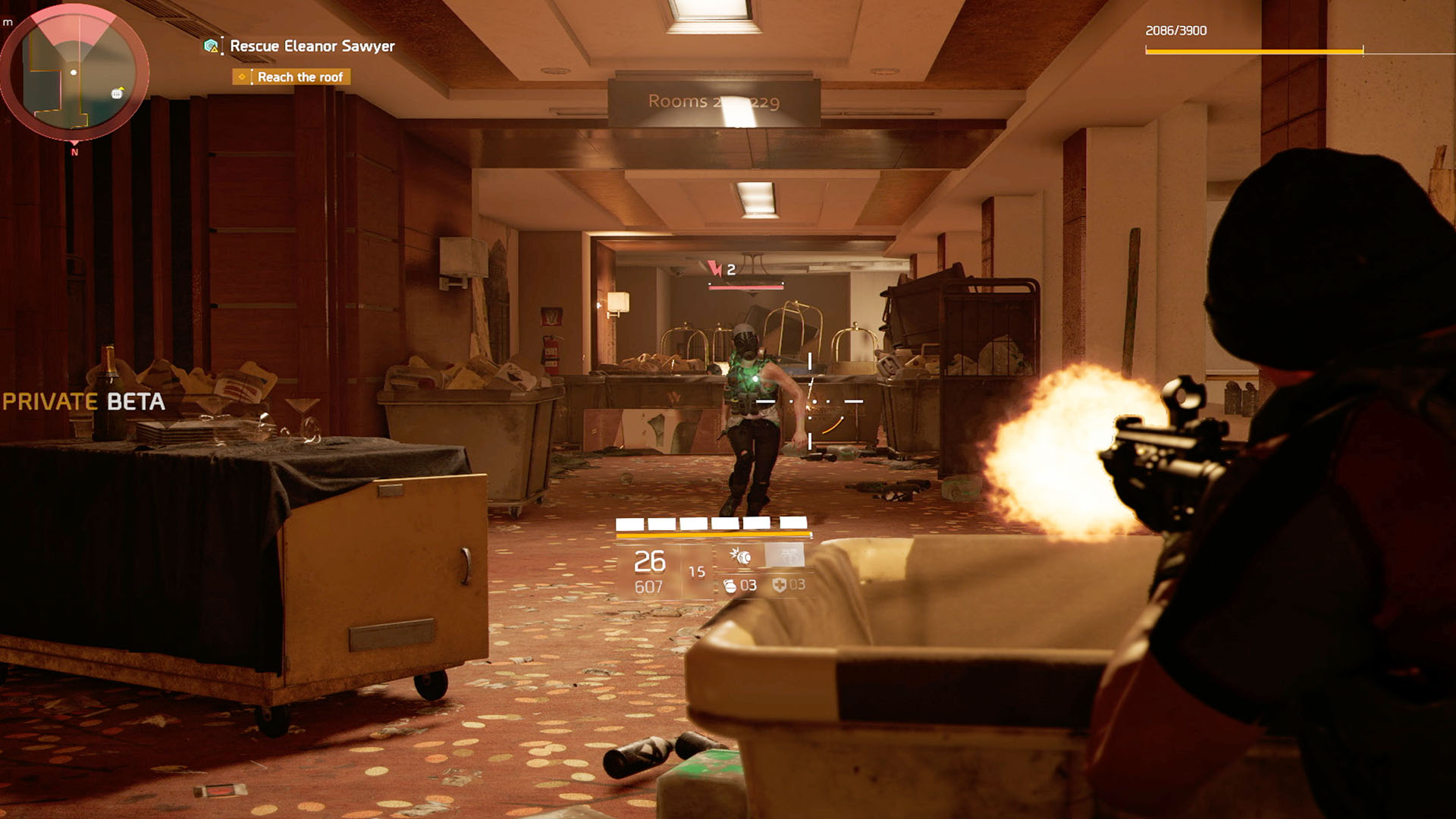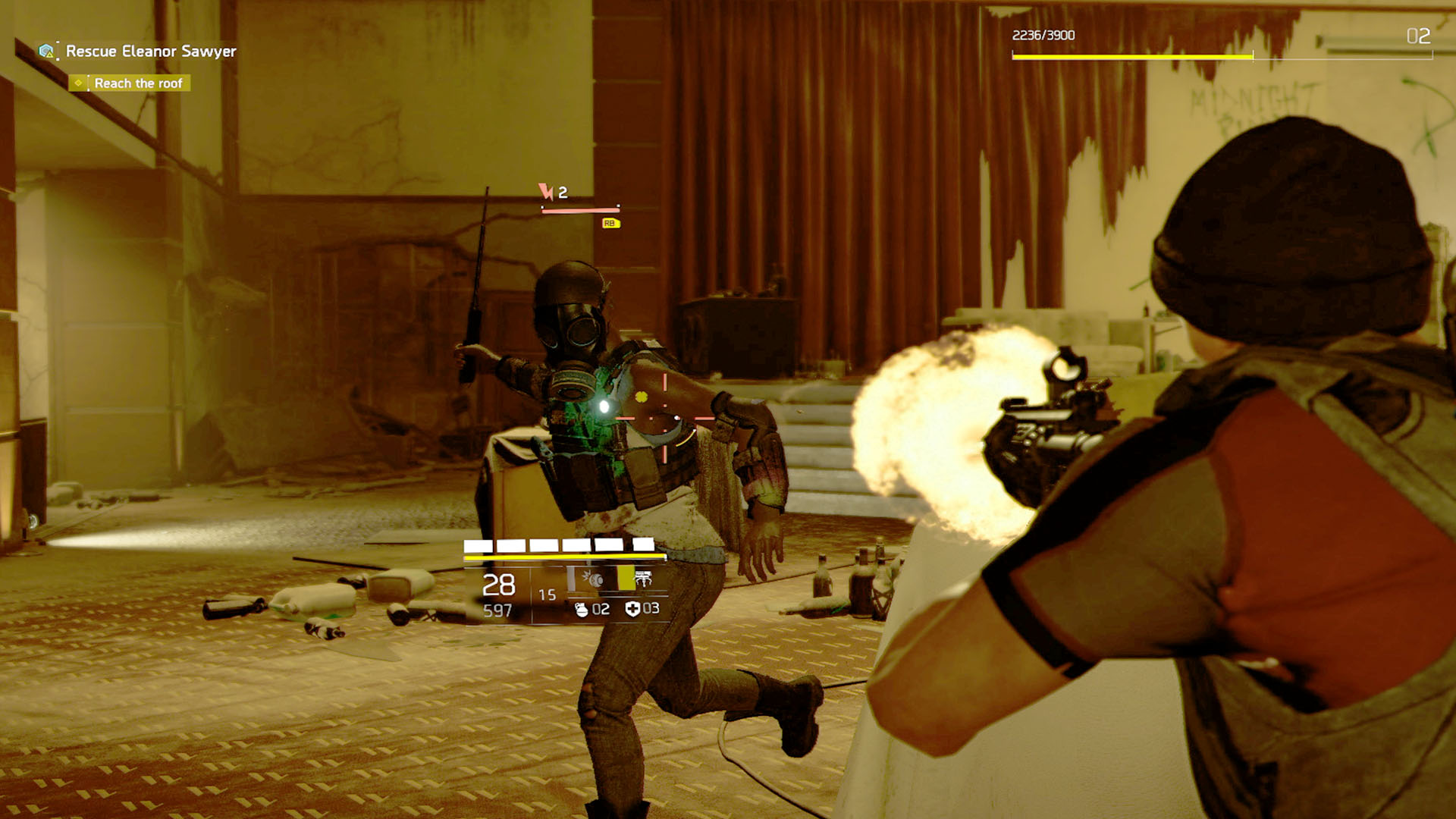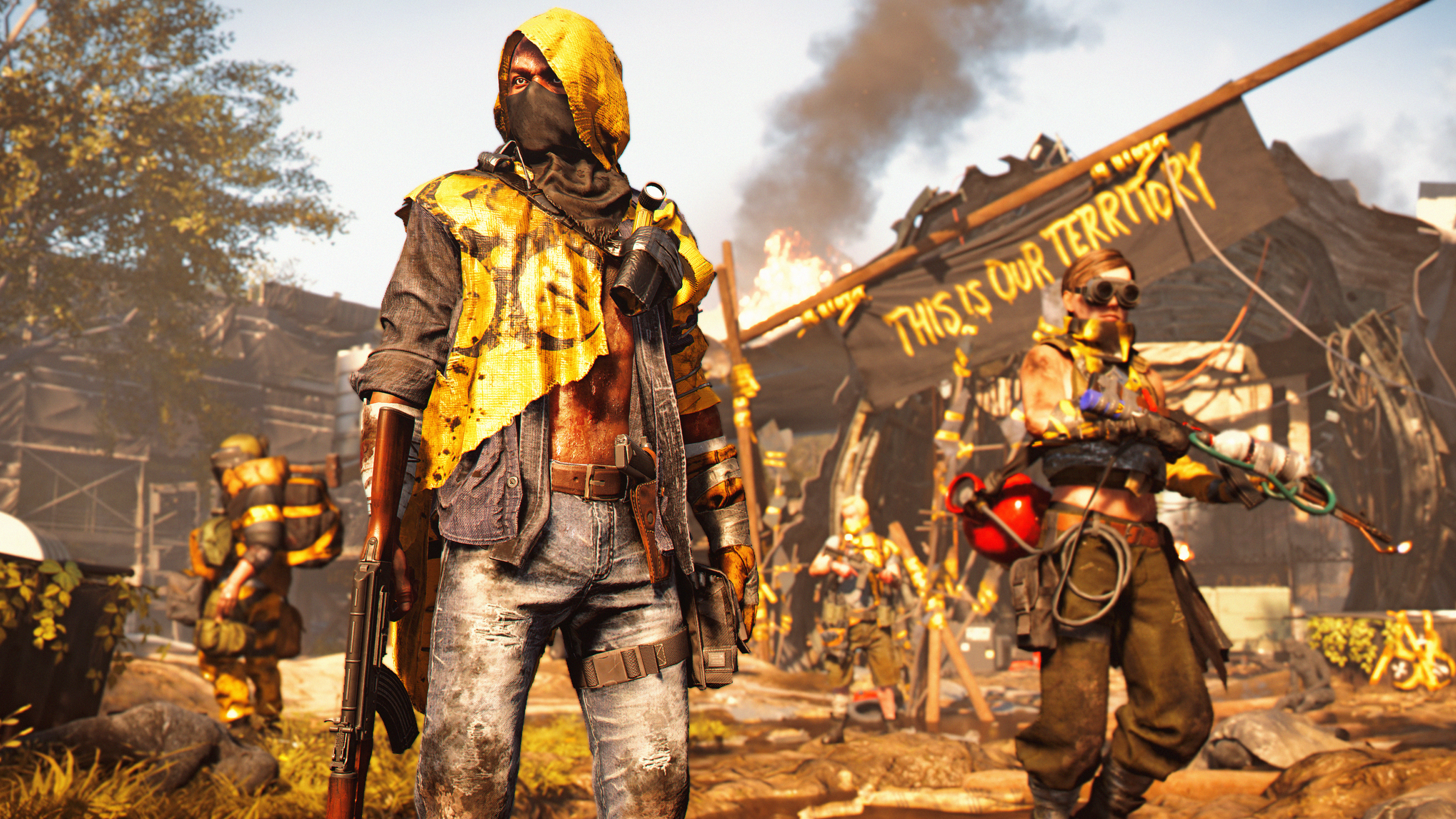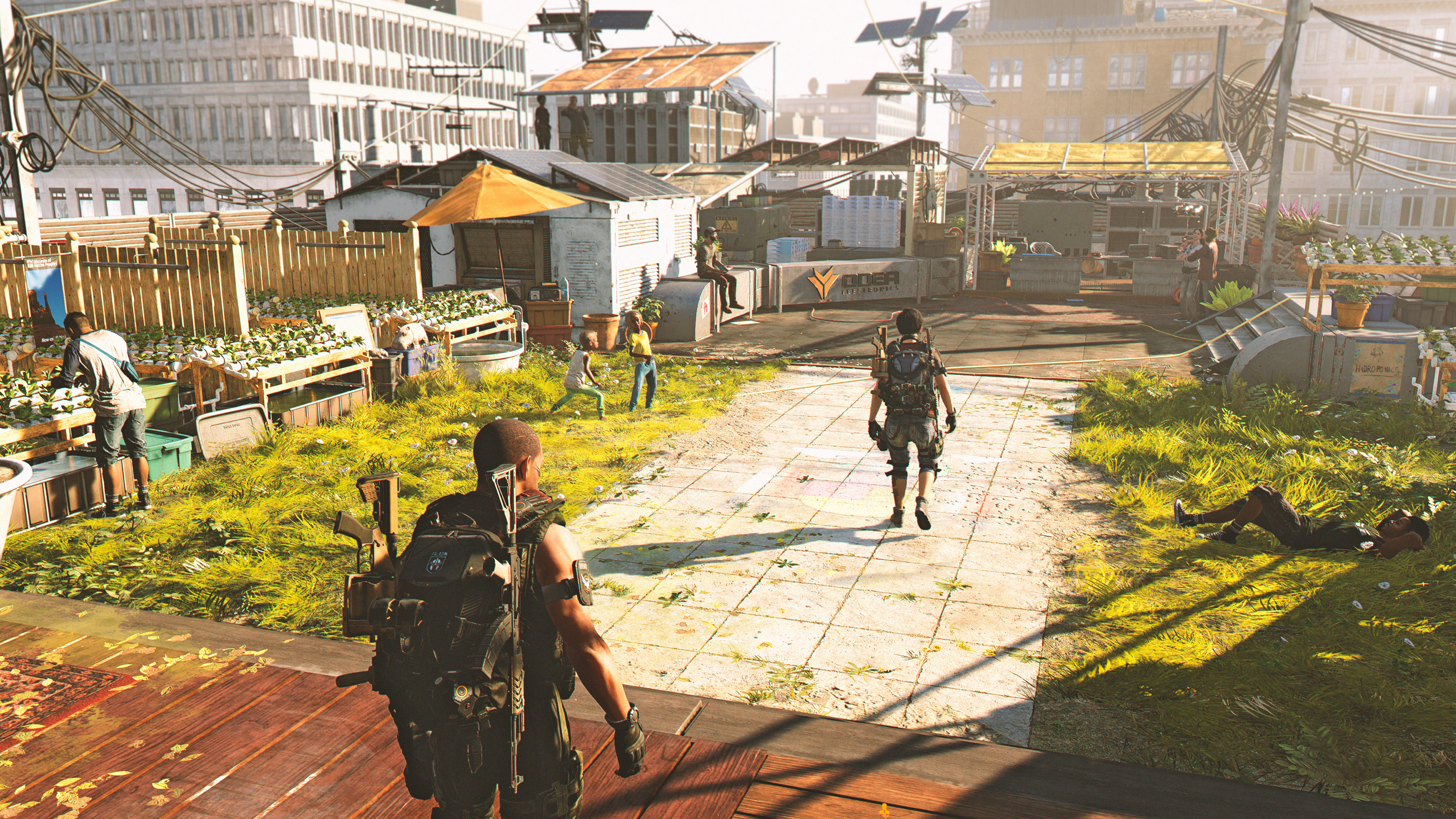Playing The Division 2 campaign and endgame feels like it could fill a Destiny shaped hole in my life
A lot of The Division 2’s design has been influenced by community feedback and it shows
When I last played The Division 2 I was impressed with the feel of its dynamic shootouts but was otherwise just a bit… [shrugs] about it all. That was largely due to only getting to play the loot grinding Dark Zone, and not having any reason or risk to its endless gun fights with nameless goons pouring from doors. (More on The Division 2’s early gameplay problems here, if you’re interested.) Fortunately, I’ve now had the chance to go deeper, playing a chunk of the game’s opening as well as some endgame content - basically a preview of the upcoming Division 2 Beta - and all my worries have disappeared.
Playing for keeps?
The problems I had before was that, without any real setting, consequence or reward, The Division 2 felt nice in your hand but was otherwise meaningless – fighting a repetitive procession of random hoodie goons in its open-world Washington map can only entertain for so long. However, with some story, objectives and the feedback of your character growing through levelling up and gaining better gear, those satisfying mechanical parts click into place in a meaningful way.
The story I’ll get to later, but something I really enjoyed was how the campaign takes you into interesting spaces to really lever the best from its cover-based shooting. I’ve always liked the solidity of The Division’s cover system – clamping you safely to walls to assess and react to threats – relocating and returning fire as you manage the situation through spacial awareness and tactical decisions, rather than just blasting everything mindlessly. Depending on how enemies react, or the gear you use, the landscape’s potential shifts and changes, offering up better positions and obvious threats to dance around.

The campaign enhances this by varying those areas; creating bottlenecks and open areas, alternating between freedom and constriction in a way open world wandering doesn’t. The texture of each encounter flexes and changes as you move through it all. You’re herded into dead ends to hunker down one minute, then released into larger battlefields with all the space you could possibly want to play with.
When it isn’t giving you a constant textural variety to keep things interesting, it’s coming up with just plain nice ideas: there’s a shoot out in a planetarium, for example, complete with ‘wonders of the universe’ narration while the projected stars and bullets fly, and the people on fire really want you to know they’re on fire. Another level makes great use of an abandoned hotel. Not only does it create a lavish backdrop, but it also transforms an open plan multi-story foyer into a great fighting space as you return fire three floors up at opposing balconies. One place I absolutely loved was some sort of science museum or institute that had an interactive exhibit full of white cubes that lit up and chimed as you touched them – it meant that every time you or an enemy took cover, a ‘bing’ and a red light showed where you were. It’s a fun area to fight in and a really clever way of playing with the expectations of video game communication.
Seeing the beauty in the world
All this action is happening against a beautiful setting. Set seven months after the last game it’s replaced the snowy white layers of Christmas with several months of uncontrolled vegetation. Washington appears either as a crumbling, lost city, littered with the discarded cars, checkpoints and bodies of its end days, or a leafy, overgrown ruin - sheets of greenery spilling out to reclaim the chaos. When you’re not fighting to survive, it’s the kind of place it’s just enjoyable to explore, finding little stories told by the placement of looted ambulances, smashed storefronts and suitcase contents scattered far and wide by their sudden and forceful abandonment.
Through all this I got a chance to see my character’s abilities level up as I scooped loot and guns from the bodies of the fallen. While the game currently seems to have a bit of a knee pad problem (I collected so, so many) the balance of finding new guns was just about right. There’s enough gear being dropped that you always feel as if you have the best tools for the job, as well as plenty of different options to try. I was constantly switching out things to test my loadout, generally favouring something like a semi-auto marksman rifle for precision and power at medium to long range, and then a more spray and pray shotgun or machine gun for closer encounters.
Sign up to the GamesRadar+ Newsletter
Weekly digests, tales from the communities you love, and more

Of course guns are only part of the story with gadgets like bomb-dropping drones and trundling ball mines spitting out incendiary pellets to give you an element of control over the battlefield itself. The basic drone comes with a gun and can be used to target a single enemy; useful for fighting on two fronts. While, upgraded, it can draw a line across the battlefield to start a bombing run that can negate, or at least impede, an entire lane. It’s a bit fiddly to target, needing a line of sight to flat ground, but has the potential to control areas as opposed to enemies. It’s the same for the ball mines that can set fire to a large area and render it closed off to any enemies it doesn’t initially ignite.
Where this variety and control really comes into play is during some of the endgame content. It’s something Ubisoft and developer Massive are pushing hard – a fat chunk of meaningful stuff to do and chase once you’ve completed the campaign. While I can’t really judge the length or variety of that in the long term from what I played, I can vouch for the satisfying challenge presented by the levels I tried. It has the kind of endgame feel that’s perfect for you and a bunch of friends digging in to take on something tricky together – the kind of climatic battle that relies on discussing gear and loadouts before starting, then shouted communication during.

There were a few issues with spawning and AI here. For example some corridors seemed to produce endless bad guys, while elsewhere others got stuck behind a door, and one boss character jumped a railing into water and we were only able to complete the section by shooting the top of his head as it crested the ripples. This isn’t a final build though so let’s give that the benefit of the doubt for now. Overall these battles are perfectly pitched for the kind of evening where your friends all agree to meet up at a certain time to throw yourself at that one thing you’ve all been struggling to finish alone. Most of this seems to revolve around the Black Tusk group, a sort of anti-Division with high tech gear and some sort of agenda that runs completely against what you’re trying to achieve by saving the world. No-one’s saying why, of course, that appears to be one of the game’s big plot secrets.
New world order
The plot itself continues on from what the original game established: set seven months after the initial apocalyptic viral outbreak, the disease has faded from prominence to be replaced with a civil war of factions splitting the country into pieces. The story I did see could be a bit inconsistently melodramatic and manipulative – ‘save my teenage daughter’ one minute for the feels and ‘kill every enemy in this building’ for... reasons. Overall, the background holds together nicely as you work to help a growing survivalist community that is trying to rebuild. Where the last game had you fighting to restore medical or security wings for Sargent Soundbite, this has you improving the quality of life for families establishing a home in a multi-story car park covered in blue tarpaulin sheets. The actual progress system there isn’t being fully talked about yet (there’s still a base of operations, for example), but you’ll see your efforts physically reflected in the settlement as you fight, and the focus seems to that rather than building your own base. At one point a mission I completed brought a barbecue into the camp. I’m not entirely sure how or why but everyone seemed very happy about it.

The whole thing is looking promising overall. The interplay of gear, ground and guns makes for some memorable shootouts, while the grind has that tangible reward that makes you want to toil for that… next… cool thing. As a former Destiny player who went from multiple evenings of strikes to slowly bouncing off the sequel’s lack of charm, this has a hint of that moreishness I’m hopeful it can deliver on. Especially as most of the improvements come via Massive taking so many pointers from the current community – responding to, and building from, criticisms and requests. So far that seems to be working, creating a game that feels simpler and more direct where needed (like the base building) but with approachable depth for those that want to commit.

I'm GamesRadar's Managing Editor for guides, which means I run GamesRadar's guides and tips content. I also write reviews, previews and features, largely about horror, action adventure, FPS and open world games. I previously worked on Kotaku, and the Official PlayStation Magazine and website.


